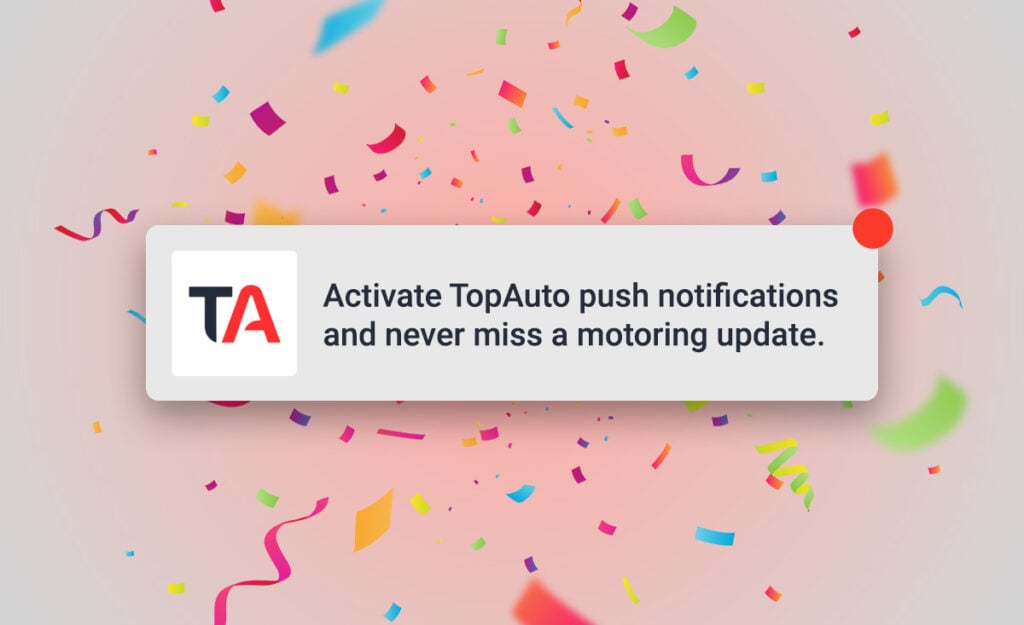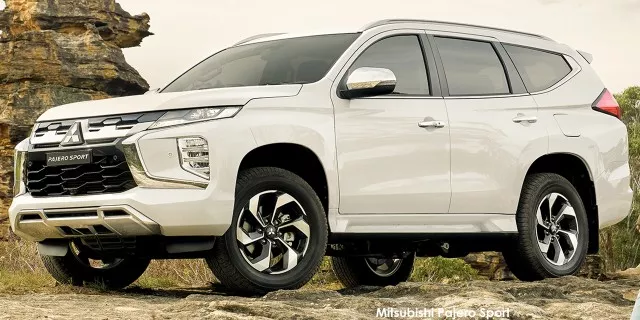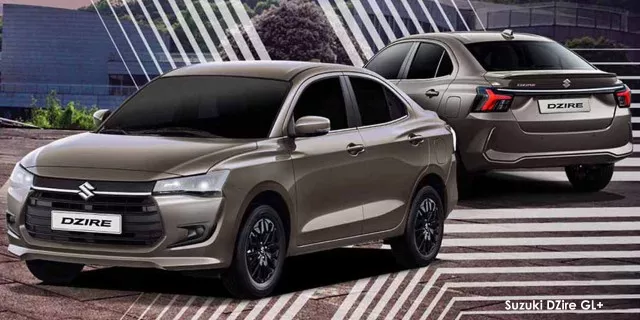The Ford bakkie that needs a special licence to drive in South Africa

The Ford F250 requires a Code C1 licence along with a Public Drivers Permit to drive in South Africa, a class of driver’s licence that’s generally reserved for small-to-medium trucks and buses.
The reason for this is that the Gross Vehicle Mass (GVM) for the behemoth of a bakkie comes in at an astounding 3,992kg.
GVM is described as the maximum permitted weight of a vehicle when fully loaded, including the car itself, passengers, cargo, fuel, and any accessories.
A standard Code B licence only allows South African motorists to pilot a car with a GVM of up to 3,500kg, with anything more than this requiring a Code C1 with a Public Drivers Permit, previously known as a Code 10.
As such, many people who bought one of these back in the day – some 20 years ago – were surprised to find out that they’d have to go back to driving school if they wanted to get behind the wheel.
We suspect this is partly the reason South Africa only ever got one generation of the F250, except for a few private imports, and that it was never followed up by a newer model.
Not everyone at the time would’ve been keen to repeat the frustrating process of obtaining a licence, nevermind one that’s more difficult to get than that which they already had.
This probably saw many would-be buyers bid the F250 farewell and spend their money elsewhere, perhaps on something smaller and lighter.
As a result, not that many F250s made it into the wild, and far fewer have survived the two decades since.
A quick look at used-car marketplaces reveals that there is but a handful of the big bakkies on sale today, and they still fetch relatively decent prices.
For instance, there are two listings on AutoTrader at the time of writing, both early model double cabs with just over 170,000km on the clock.
One of these are selling for R349,900 while the other is going for a slightly higher R359,995.
That being said, their rarity has benefitted the select few who were willing to jump through the necessary hoops.
Back when it was announced in March of 2005, the F250 was available in three specifications comprising a 4×2 single cab, 4×4 single cab, and 4×4 double cab.
Prices for these models were pegged at R319,950, R369,950, and R414,950, respectively.
This means the bakkie lost very little value over the last 20 years, and that those which remained in good condition may potentially even have appreciated.
F250 specs
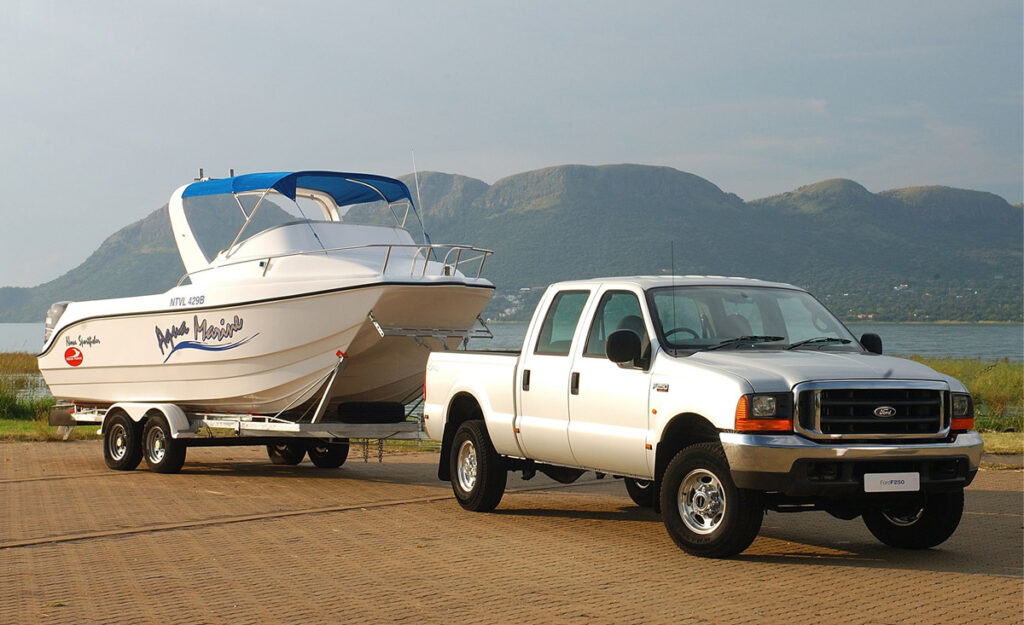
Now the F250 was anything but a luxurious bakkie like what we’re used to today, but it was big in stature, power, and utility.
The double cabs came in at a monolitic 6,273mm in length, 2,031mm in width, and 1,955mm in height – outsizing even the biggest bakkies on the market today by a significant margin.
Under the bonnet, the Ford boasted a 4.2-litre, in-line six cylinder, turbocharged diesel powerplant with a peak output of 132kW and 500Nm
This was channeled to the ground via a five-speed manual transmission exclusively, no automatics were available in this Ford.
A gigantic 144-litre fuel tank was fitted in the two-door variants as the big bakkie was rather thirsty, whereas the four-doors gained a 114-litre cell.
All three models were fitted with leaf springs at the rear to support a 1,101kg maximum payload in the enormous load box, which measures an impressive 2m by 1.6m on the double cabs.
All three were equipped with a limited slip differential, too, whereas the two all-paw entries also boasted an electronic shift-on-the-fly 4×4 system with low range.
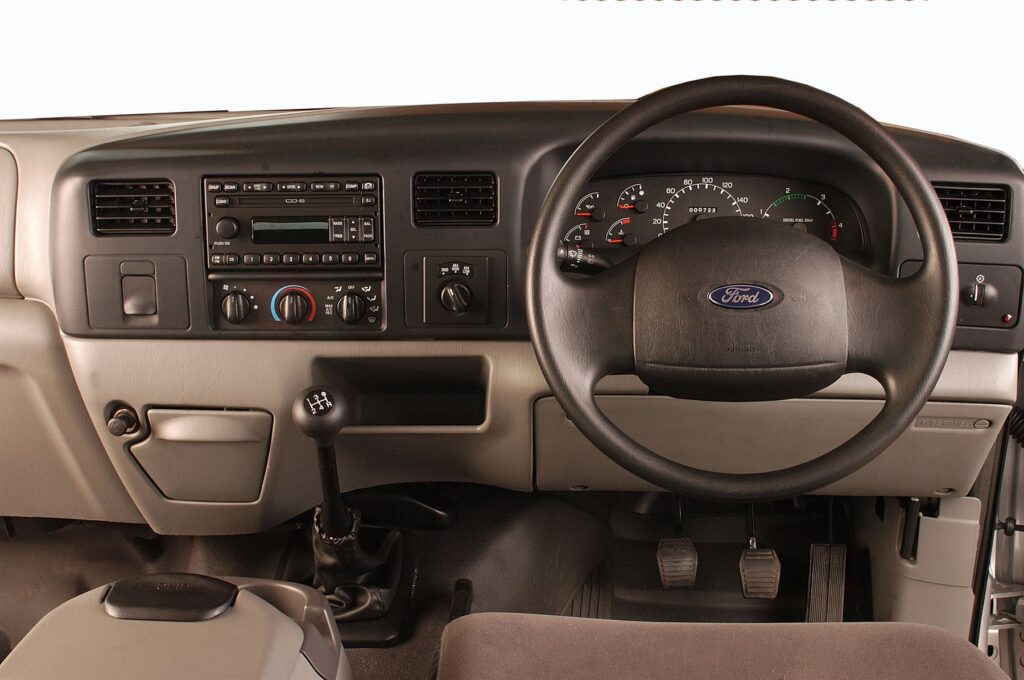
A workhorse through and through, creature comforts weren’t much to write home about in the F250.
In the flagship XLT double cab, you’d find a radio with a 6-disc CD player, manual air conditioning, a 12V auxiliary power point, electric windows, cloth upholstery, and front “bucket seats” with integrated headrests.
It also came with variable intermittent wipers, electric mirrors, a chromed grille, integrated side steps, and 16-inch alloy wheels.
Safety systems comprised dual front airbags and ABS brakes, a relatively short list for such a massive vehicle.
This particular F250 was also imported from Brazil and thus tailored to that market, which is vastly different from ours.
Hence, Ford went through the trouble to also install bespoke air filters, door seals, suspension, and engine fixtures that were tuned for the “ultra-harsh South African conditions.”
It’s indeed sad that the F250 never continued in South Africa. It was unlike anything we had before its introduction, and since.
We’d love to see Ford take another stab at the market with a new one-and-a-half tonner, but if the lessons of the F250 are taken to heart, there’s probably not a big chance it will happen.



